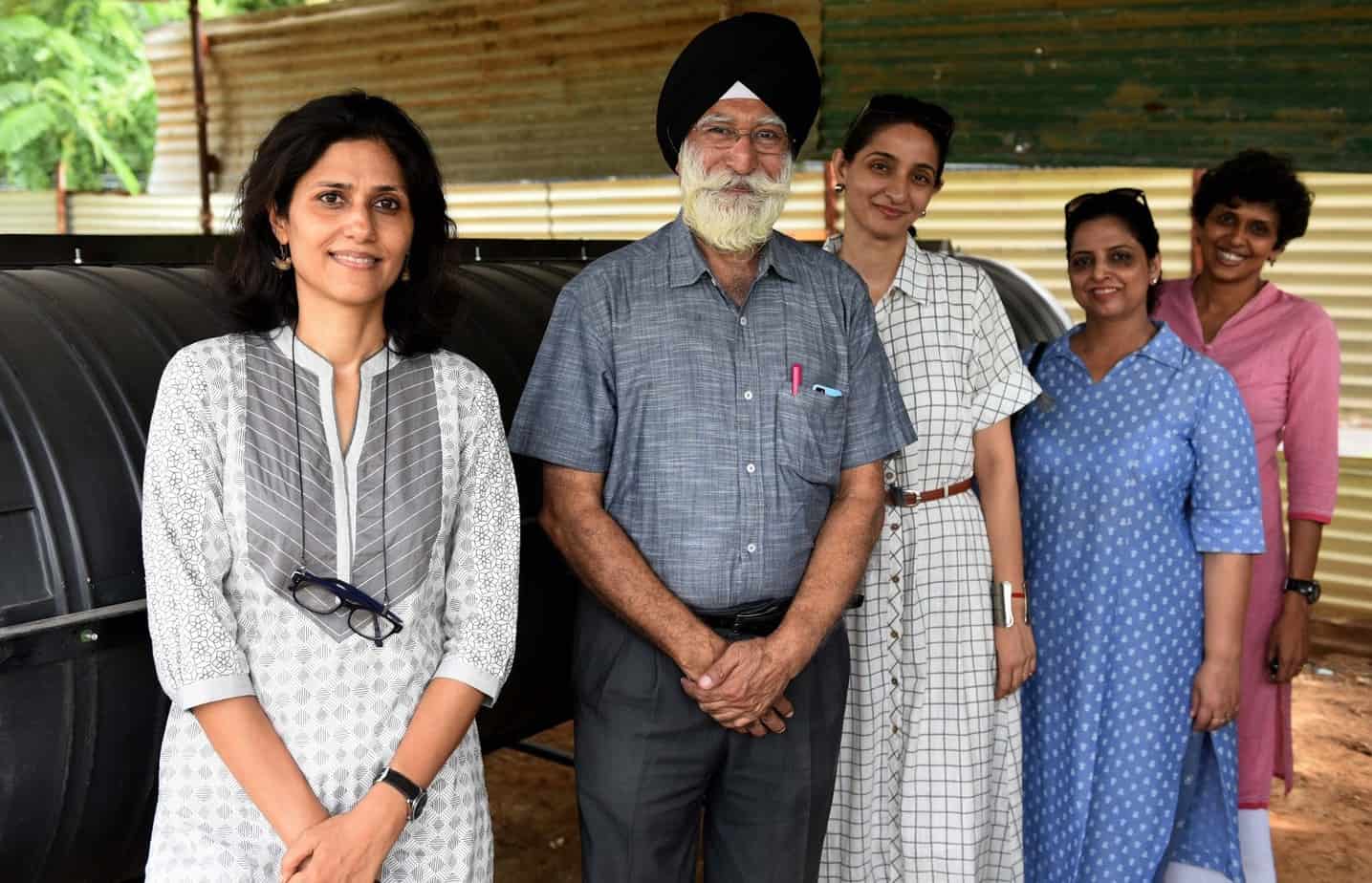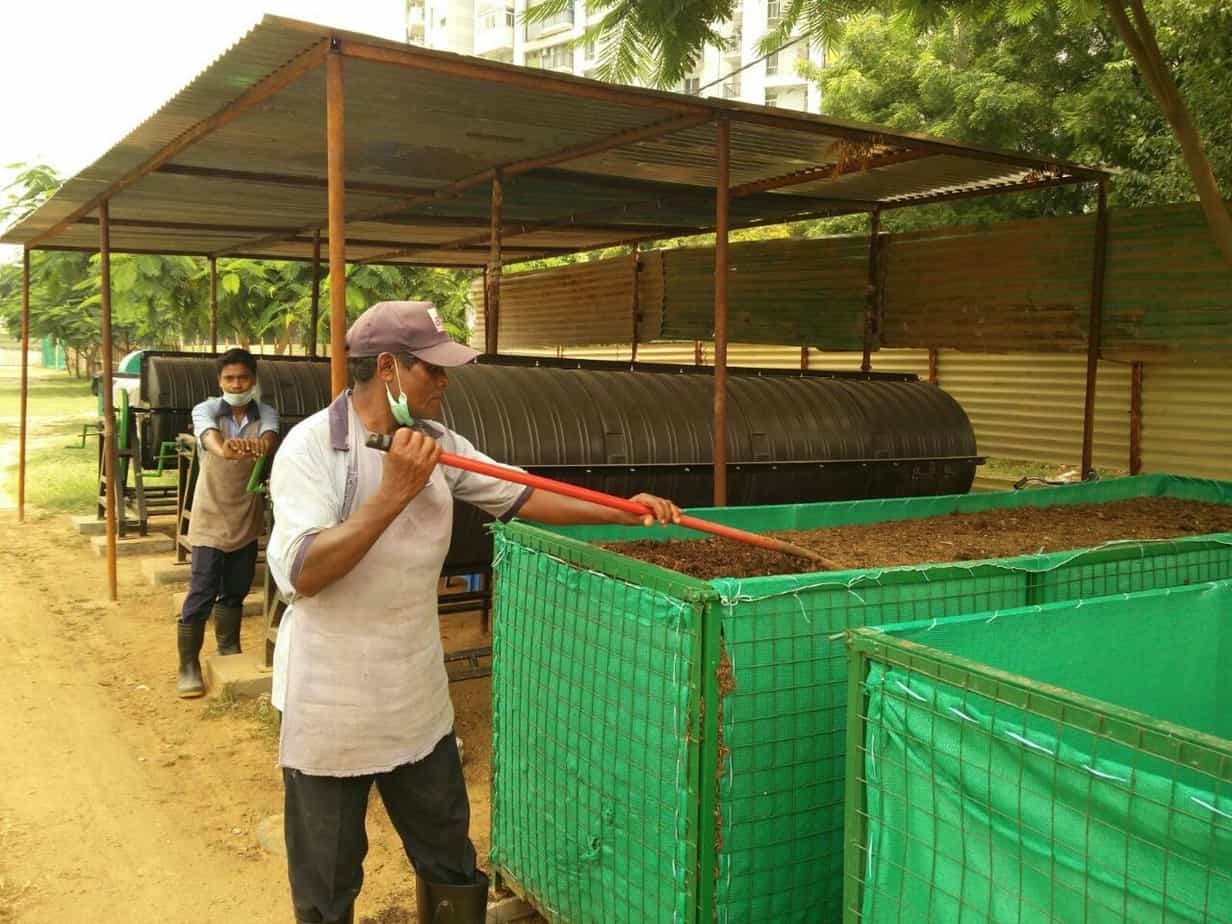Nirvana Country in Sector 50, Gurugram, Haryana. A sprawling 108-acre scenic and lush green community comprised of 1100 independent bungalows with independent gardens. When writer Chetan Mahajan and his wife Vanduta moved in here, they had perhaps never imagined that they would eventually be forced to move, and that too for environmental reasons.
The vast acres flanking the community was dotted with strewn plastic bags and mounds of waste being burnt at odd times of the day. Pollution levels had risen to unbearable heights and families were moving out with their elderly and children. The Mahajans were among them, as they decided to shift base from the city to Uttaranchal following severe wheezing and respiratory issues troubling their son Anhad.
The trend was alarming and as a community, we had to do something. With that in mind, resident sensitisation started close to a year ago, primarily through the community Google group. This was used to share with them the surmounting problem of waste in the city, the importance of segregation and available composting methods. Many residents started home composting and were also encouraged to manage their dry waste intelligently. But the real challenge lay in scaling these efforts up as a community.
Managing our own waste: The Nirvana journey
The first task ahead of us was to zero in on a suitable organic waste composting solution. Limited space and funds were available and sanctioned by the Resident Welfare Association Elected Committee.
Our quantum of organic waste was over a ton a day from our huge parks and independent gardens. After extensive research, we decided to go for a combination of in-vessel composting and metal wireframe composters. The food waste was crushed and horticultural waste shredded before it was added to the composters.
Gradually we built our composting infrastructure to include five 2000-litre composters, one 2.5 HP horticulture shredder, 10 metal bins and one food crusher. This project has been funded by the RWA and their support has been critical to bringing this project to life and sustaining it… specially at a time when we see other RWA’s not lending support to waste champions in their communities in Gurugram.
For segregation we followed the 2bin1bag method and two colour-coded green and red dustbins and a bag were given to all the residents — the green bin for wet kitchen waste, the red bin for reject and hazardous waste, and the bag for dry recyclables like plastic, paper, cardboard and metal. The bins were funded through a CSR project and provided to the residents free of cost along with a laminated segregation leaflet.
Everybody could understand the wet and the dry, but we wanted to urge them into the third line of segregation – that of the rejects – to uphold the dignity of the waste picker, so that the latter do not have to rummage through the diaper and sanitary waste to salvage the recyclables.
Orientations were also held for the horticulture and housekeeping staff in order to sensitise them to the subject of waste segregation and to the problem of waste in the city. Segregation leaflets flank the grills of the guard huts at the seven entry gates and the pick up carts as a daily reminder to the residents and the house-helps. More recently, a domestic help orientation was also held on Independence Day to ensure 100% compliance.
A small team of resident volunteers goes door to door even now to sensitise residents, especially those who have been defaulting, to understand why they have not been able to come on board. In the meantime, email alerts were shared thanking the residents who give in segregated waste.
What has all this led to? Nirvana, which has around 900 occupied bungalows currently, has successfully generated over five tons of compost as I write and kept over 50000 kilos of organic waste away from the landfill since November last year! The compost is being used in the 16 sprawling parks inside Nirvana and also being sold to the residents at a nominal fee with their consent. The proceeds go towards the betterment of the staff and their working conditions in the waste management team.
Is the journey over?
Even though we are segregating our waste three-way as organic, recyclable and reject, the challenges lie with the recyclable and reject waste destinations. Some companies are happy to come for pick up on individual home-owner requests, but they are still not willing to commit themselves to working at a community level for the collection of dry recyclable waste.

The team on the ground (supported by staff and a few missing members) – Monika Khanna Gulati, PS Kohli, Aradhana Dhand, Pratibha Mandhar, Kavitha Elango. Pic: Indranil Das.
We need more waste entrepreneurs in the city who will connect the collection of recyclable waste to the industry consuming it. Lighter plastics get left out, though our waste pickers are able to monetise the other dry waste which can be comfortably carried back on their bicycles.
Our reject waste goes to Bhandwari, the shared landfill between Gurugram and Faridabad.
The entire system is like work-in-progress… there are never ending challenges, but they all need to be surmounted. Conquering the demon of waste, one by one.
The biggest learning from this has been that no matter which set-up is installed, and how much money is spent, no composting or waste management system can function successfully without resident participation and continuous monitoring. They are the champions, the nerve and muscle of the decentralised system of solid waste management.
Today, it also gives us great pleasure that we are connected to people across the country and it is very fulfilling to be able to share structured information that can help replicate green practices, and also ensure that positive enthusiasm and energy do not go unsupported.


So happy to read this! Will try to follow it up at my end as well..
Excellent job and very inspiring !!!!